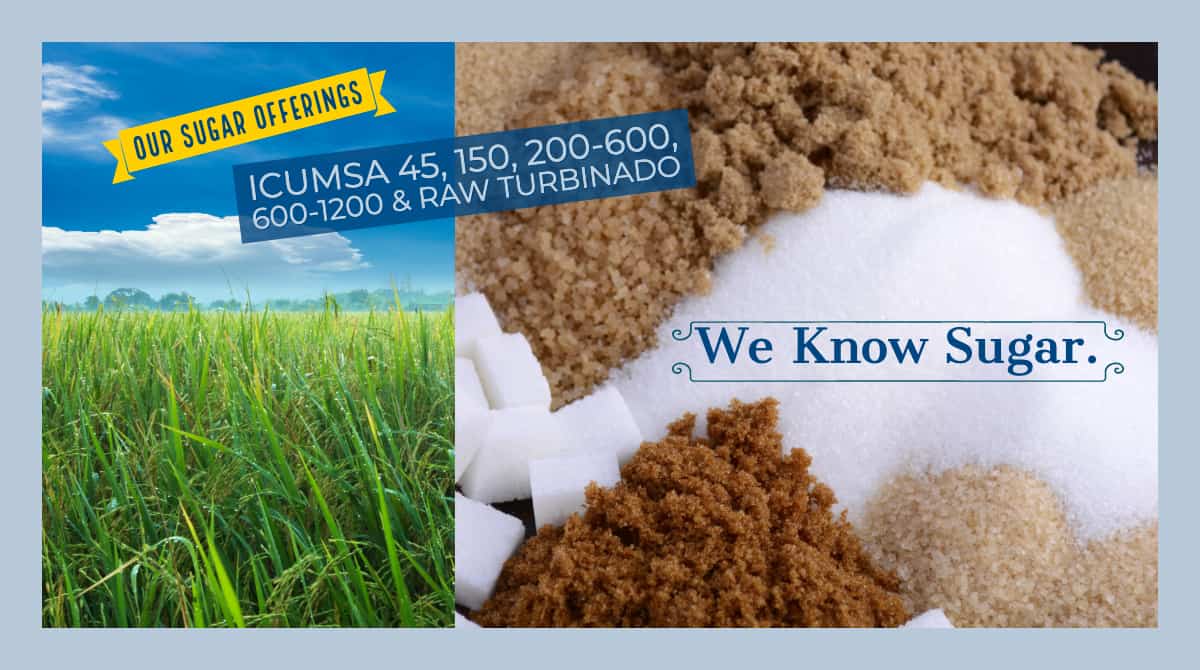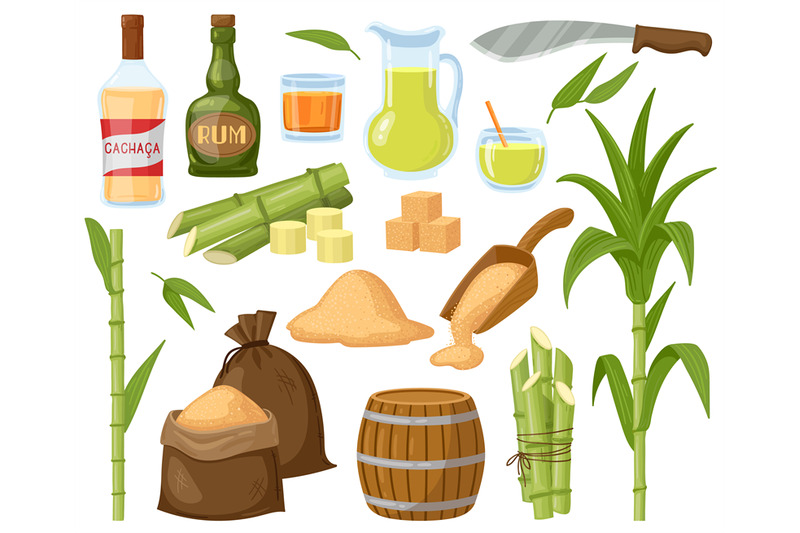What sugar cane products Reveal About Agro-Industrial Trends
Wiki Article
A Deep Study Sugar Cane: Insights on Production, Supplies, and Item Advancement
Sugar cane plays a crucial function in farming, underpinning economic climates in exotic areas. Its farming includes elaborate procedures influenced by numerous ecological variables. Nevertheless, growers deal with significant challenges, including climate adjustment and market variations. Innovations in item advancement are emerging in response to advancing customer needs. Recognizing these dynamics is vital for understanding the future of this important plant and its effect on worldwide markets. What exists ahead for sugar cane and its myriad applications?The Value of Sugar Cane in Global Farming
Sugar cane works as a necessary crop in worldwide farming, underpinning economies and food systems in many tropical areas. This versatile plant is mostly cultivated for its high sucrose web content, which is fine-tuned right into sugar, an essential ingredient in plenty of food. Beyond sweetening, sugar cane is likewise crucial for creating biofuels, specifically ethanol, contributing to power sustainability.The economic relevance of sugar cane encompasses employment, giving incomes for numerous farmers and workers in processing facilities. In a number of countries, sugar cane cultivation and handling represent considerable parts of agricultural GDP, affecting trade equilibriums and local development.Additionally, sugar cane's versatility to various climates improves its importance as a crop, making certain regular supply in global markets. Its spin-offs, consisting of molasses and bagasse, further diversify its energy, making it a vital part in food, energy, and sector. Overall, sugar cane continues to be a keystone of agricultural productivity worldwide.Cultivation Processes: From Planting to Harvest
Cultivating sugar cane involves a series of well-defined procedures that assure excellent growth and yield. The growing starts with land prep work, where the dirt is tilled to protect ideal oygenation and water drainage. Following this, seed cane, which contains mature stalks, is selected and cut into segments (sugar cane products). These segments are after that planted in furrows, making sure correct spacing to enable sunshine and nutrient access.Once planted, watering systems are used to keep ample dampness levels, as sugar cane prospers in damp conditions. Weeding and insect administration are necessary during the expanding duration to reduce competition for resources. Nutrient application, consisting of fertilizers, sustains durable growth. As the plants mature, keeping an eye on for conditions and insects continues.Harvesting generally happens 10 to 24 months post-planting, depending upon the selection. The canes are cut short, guaranteeing marginal waste, and are promptly carried for processing to maintain sugar top qualityGeographic Circulation of Sugar Cane Production
The geographical circulation of sugar cane production is mostly shaped by certain environment and soil needs. Major producing countries, such as Brazil, India, and China, benefit from tropical and subtropical environments that support the crop's growth. Comprehending these factors gives understanding right into the global landscape of sugar cane farming.Significant Producing Countries
Although sugar cane is grown in different areas worldwide, specific nations control production due to positive environments and farming practices. Brazil leads the global market, making up roughly one-third of complete production, thanks to its considerable plantations and advanced farming techniques. India complies with as a significant manufacturer, gaining from both desirable weather problems and a big residential market. China and Thailand also rate among the top manufacturers, with reputable frameworks sustaining their sugar industries. Other remarkable contributors consist of the USA, Mexico, and Australia, each leveraging their unique farming systems to improve output. These nations play a necessary role in the sugar cane supply chain, influencing international rates and availabilityClimate and Soil Demands
Suitable environment and dirt problems are critical for effective sugar cane production. Sugar cane flourishes in tropical and subtropical areas, needing cozy temperatures in between 20 ° C and 30 ° C (68 ° F to 86 ° F) These plants need abundant sunshine and rains, ideally in between 1,500 to 2,500 millimeters annually, to guarantee peak growth. The soil should be well-drained, abundant, and abundant in organic issue, with a pH level preferably between 5.5 and 8.5. Sandy loam or clay loam soils are particularly favorable to sugar cane cultivation, providing necessary nutrients and drainage. Geographic circulation is mainly affected by these variables, with significant production locations situated in Brazil, India, and China, where environmental problems align with the plant's requirements for development and return.
Obstacles Dealt With by Sugar Cane Growers
Sugar cane cultivators encounter substantial obstacles that affect their resources. Environment modification presents unpredictable weather patterns, affecting plant return and top quality. In addition, market value volatility produces monetary uncertainty, making complex long-term preparation for these agricultural manufacturers.Climate Modification Impacts

Exactly how do environment change effects affect the viability of sugar cane growing? Climbing temperatures and unpredictable weather condition patterns especially challenge sugar cane cultivators. Raised heat can cause lowered returns, as the plants struggle to grow in severe conditions. Furthermore, altered rains patterns lead to either droughts or extreme flooding, both damaging to plant health. Insects and reference illness are most likely to proliferate in warmer climates, additionally harmful production. Additionally, soil deterioration and salinization as a result of climbing sea levels can reduce cultivatable land. These weather adjustments compel farmers to adjust their techniques, commonly requiring financial investment in new technologies and durable crop ranges. Inevitably, the sustainability of sugar cane farming depends upon dealing with these environment challenges successfully.

Market Value Volatility
Market value volatility offers significant challenges for sugar cane cultivators, impacting their financial stability and preparation. Changes in market value, driven by elements such as worldwide supply and demand, climate condition, and federal government policies, develop unpredictability for manufacturers. This unpredictability makes it hard for growers to forecast profits and manage business expenses effectively. Additionally, when prices drop unexpectedly, numerous farmers may struggle to cover production expenses, bring about possible economic distress. To minimize these risks, some farmers turn to contracts or hedging approaches, yet these services might not be accessible to all. Market rate volatility remains a consistent concern, influencing the overall sustainability and success of sugar cane farming.Recognizing the Sugar Cane Supply Chain

Market Trends Affecting Sugar Cane Prices
The characteristics of sugar cane rates are influenced by a selection of market trends that show more comprehensive economic conditions and customer actions. Global demand for sugar and sugar-related items plays a necessary duty, with increasing interest in organic and sustainably sourced items driving rates higher. In addition, variations in oil rates influence the price of production and transport, additional affecting market prices. Weather condition patterns are another significant aspect; unfavorable conditions can cause decreased yields and raised prices. Trade plans, tolls, and global arrangements also shape the market landscape, impacting supply chains and schedule. Money exchange rates can complicate international trade, impacting costs for both exporters and importers. Changes in customer choices towards healthier alternatives might modify need patterns, developing a surge impact on sugar cane rates. sugar cane products. For that reason, understanding these interconnected trends is crucial for stakeholders in the sugar industryTechnologies in Sugar Cane Item Development
Numerous innovations in sugar cane item growth are reshaping the industry and increasing its applications. Scientists are discovering alternate uses past standard sugar, including biofuels, biodegradable plastics, and health supplements. Advancements in chemical processing strategies have actually enhanced the removal of valuable substances such as antioxidants and vitamins from sugar cane, advertising its usage in useful foods.Additionally, the growth of genetically modified sugar cane ranges aims to improve return and resistance to insects, while additionally boosting the nutritional profile of the plant. Advancements in fermentation procedures have actually brought about the production of top notch alcohols stemmed from sugar cane, appealing to a growing market for craft spirits.Moreover, lasting practices in growing and handling are obtaining traction, with a focus on minimizing ecological influences. These advancements not only develop new market chances but likewise cultivate a more sustainable approach to sugar cane production, straightening with global trends in the direction of environmentally friendly items.Regularly Asked Questions
What Are the Ecological Effects of Sugar Cane Farming?
The environmental influences of sugar cane farming consist of deforestation, loss of biodiversity, water air pollution from fertilizers and pesticides, dirt deterioration, and greenhouse gas emissions, every one of which significantly add to ecological imbalances and climate modification.
Exactly How Does Sugar Cane Growing Affect Citizen Economies?
Sugar cane cultivation greatly affects local economic situations by developing work, boosting farming markets, and producing income for farmers. However, it can also lead to financial dependency and top article changes based on market demands and ecological problems.What Are the Main Pests and Diseases Affecting Sugar Cane?
The major bugs influencing sugar cane include the sugarcane borer and aphids. Illness such as red rot and smut greatly influence yield. Farmers have to execute incorporated parasite management methods to minimize these dangers effectively.How Is Sugar Cane Processed Into Different Products?
Sugar cane handling includes squashing the stalks More Help to extract juice, adhered to by information, dissipation, and formation. This process yields raw sugar, molasses, and ethanol, each serving unique purposes in various markets, from food to power.What Are the Nutritional Aspects of Sugar Cane?
The nutritional elements of sugar cane consist of vital vitamins and minerals, especially B vitamins, calcium, and iron. It also consists of fiber, though primarily made up of sucrose, which provides energy yet lacks considerable nutrients.Report this wiki page